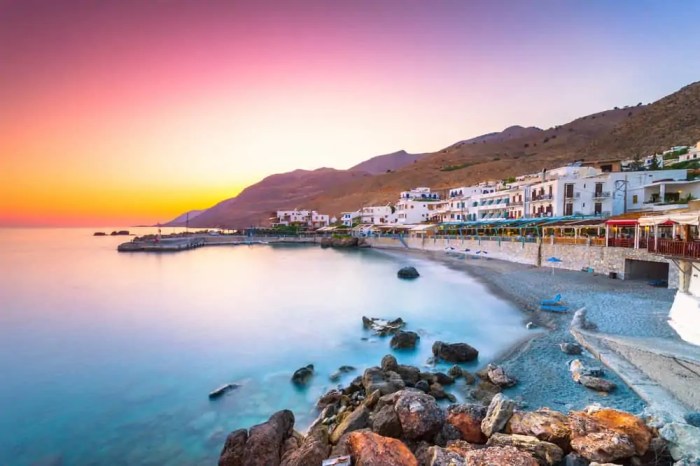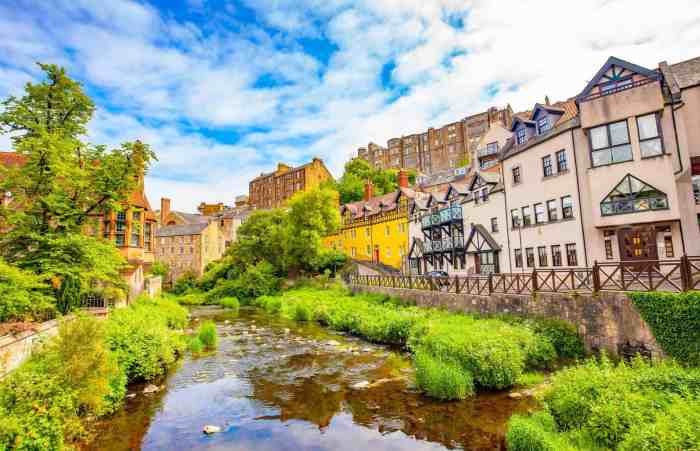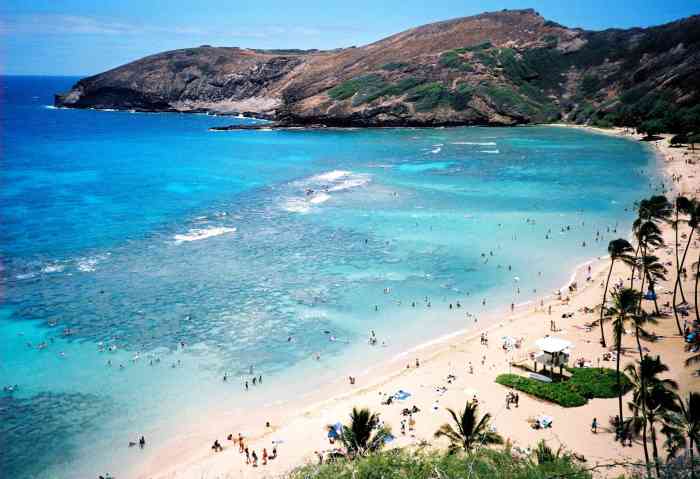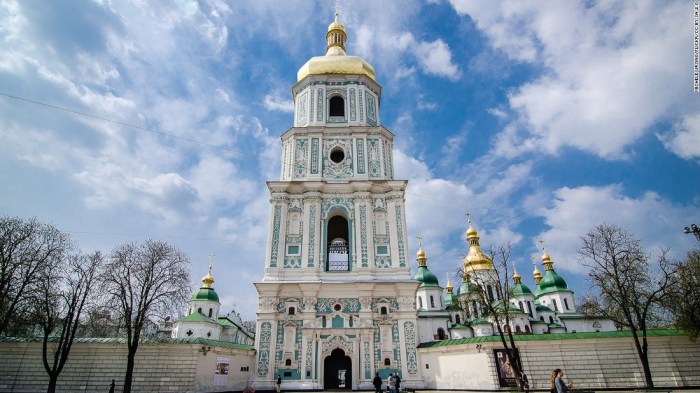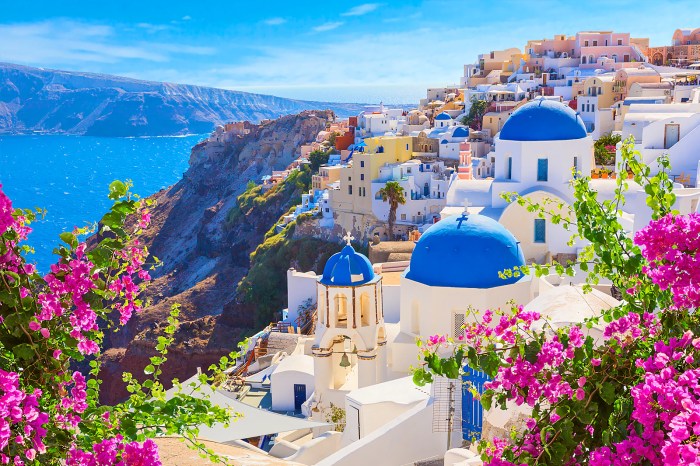Top 10 Places To Visit In The Faroe Islands
Top 10 Places To Visit In The Faroe Islands: Imagine a world sculpted by wind and sea, where dramatic cliffs plunge into the ocean, and waterfalls cascade into turquoise waters. The Faroe Islands, a remote archipelago nestled in the North Atlantic, offer a breathtaking escape into untouched natural beauty and a unique cultural heritage.
From the towering cliffs of Vestmanna to the mystical village of Sørvágur, each destination unveils a captivating blend of rugged landscapes, charming villages, and a rich history. Whether you’re seeking adventure, relaxation, or a glimpse into a world untouched by mass tourism, the Faroe Islands promise an unforgettable journey.
The Faroe Islands: A Remote Paradise
The Faroe Islands, a self-governing archipelago under the Kingdom of Denmark, is a collection of 18 volcanic islands nestled in the North Atlantic Ocean, halfway between Iceland and Norway. This remote and rugged landscape offers a unique blend of Nordic culture and breathtaking natural beauty.
The islands’ isolation has preserved a rich cultural heritage, and its pristine landscapes, characterized by dramatic cliffs, cascading waterfalls, and verdant valleys, beckon adventurous travelers seeking a truly off-the-beaten-path experience.
The Allure of the Faroe Islands
The Faroe Islands offer a captivating escape for those seeking an authentic connection with nature. The islands’ unspoiled environment, characterized by untouched landscapes and abundant wildlife, provides a sanctuary for nature enthusiasts. The islands’ remoteness has preserved a pristine environment, allowing visitors to immerse themselves in a world where time seems to stand still.
The absence of large-scale development and the preservation of traditional practices have created a unique and captivating environment that draws travelers seeking a genuine and unforgettable experience.
The Majestic Cliffs of Vestmanna
The towering cliffs of Vestmanna, located on the western coast of Streymoy, are a sight to behold. These dramatic rock formations rise hundreds of feet from the sea, offering breathtaking views of the rugged coastline and the vast expanse of the North Atlantic.
The Faroe Islands are a seriously cool place to visit, especially if you’re into dramatic landscapes and epic hikes. If you’re looking for a more laid-back vibe with ancient ruins and stunning beaches, check out the Top 10 Places To Visit in Crete.
Both places are awesome in their own way, so it really depends on what kind of trip you’re looking for! If you want to see some seriously cool waterfalls and cliffs, then the Faroes are definitely for you.
Birdwatching Paradise
The cliffs of Vestmanna are renowned for their abundant birdlife, making them a popular destination for birdwatchers. The sheer rock faces provide ideal nesting grounds for a variety of seabirds, including puffins, guillemots, razorbills, and kittiwakes.
The cliffs are a true haven for seabirds, offering a unique opportunity to observe these fascinating creatures in their natural habitat.
Boat Tours
To experience the cliffs up close, boat tours are available from the village of Vestmanna. These tours take visitors along the coast, providing stunning views of the cliffs and the surrounding seabird colonies. The boats navigate through narrow inlets and caves, offering a truly immersive experience.
The boat tours are an unforgettable way to witness the grandeur of the Vestmanna cliffs and the abundance of birdlife.
The Enchanting Gásadalur Waterfall
Nestled in the heart of the Faroe Islands, the Gásadalur Waterfall is a breathtaking natural wonder that embodies the raw beauty of this remote archipelago. Cascading from a dramatic cliff face, the waterfall plunges into the churning sea below, creating a scene of mesmerizing beauty.
Accessibility and Views
The Gásadalur Waterfall is easily accessible, thanks to a paved road leading to the picturesque village of Gásadalur. Visitors can park their cars near the village and enjoy a short walk to the viewing platform, offering stunning panoramic views of the waterfall and the surrounding coastline.
From this vantage point, you can witness the waterfall’s full glory as it plunges into the ocean, creating a mesmerizing display of nature’s power.
The waterfall’s accessibility and stunning views make it a popular destination for photographers and nature enthusiasts alike.
The Mystical Village of Sørvágur
Nestled on the western coast of Vágar Island, Sørvágur is a charming village that exudes a sense of tranquility and captivating beauty. With its picturesque harbor, traditional architecture, and rich cultural heritage, Sørvágur offers a glimpse into the authentic Faroese way of life.
The Picturesque Harbor and Traditional Architecture
Sørvágur’s harbor is a sight to behold, with its colorful houses lining the waterfront. The village’s traditional architecture, characterized by turf-roofed houses, reflects the ingenuity and resilience of the Faroese people who have adapted to the harsh climate and rugged landscape.
These houses, often referred to as “grass houses,” provide insulation and are a testament to the village’s long-standing connection to the land.
The Breathtaking Lake Sørvágsvatn
Lake Sørvágsvatn, also known as Leitisvatn, is a stunning natural wonder that captivates visitors with its unique geological formation and mesmerizing optical illusion. Nestled high above the Atlantic Ocean, this freshwater lake appears to seamlessly blend with the vast expanse of the sea, creating a breathtaking spectacle that defies the laws of nature.
The Faroe Islands are seriously stunning, with their dramatic cliffs and hidden waterfalls. If you’re looking for a unique European getaway, it’s definitely worth checking out. And if you’re looking for a similar vibe with a bit of a Mediterranean twist, you might want to check out the Top 10 Places To Visit in Milos.
Milos is known for its turquoise waters and volcanic landscapes, and it’s just as captivating as the Faroe Islands, but with a little more sunshine.
The Lake’s Unique Geological Formation
Lake Sørvágsvatn is situated on the western side of the Faroe Islands, perched atop a dramatic cliff that plunges directly into the ocean. This remarkable geological formation is the result of centuries of erosion and tectonic activity, shaping the landscape into its current form.
The lake itself is a natural reservoir, fed by rainwater and underground springs. Its freshwater is distinctly separated from the salty waters of the Atlantic Ocean by a thin layer of rock that acts as a natural barrier.
The Optical Illusion
The most captivating aspect of Lake Sørvágsvatn is the optical illusion that makes it appear to connect to the ocean. This illusion is created by the sheer height of the cliff and the angle at which the lake is positioned.
The Faroe Islands are a seriously cool place to visit, especially if you’re into dramatic landscapes and unique wildlife. If you’re looking for a similar vibe, but with a bit more sunshine, check out the Top 10 Places To Visit in New Zealand.
Both destinations offer stunning scenery and unforgettable experiences, but the Faroes have a bit more of that wild, untouched feel.
From certain vantage points, the horizon line between the lake and the ocean becomes blurred, creating the impression that the two bodies of water are seamlessly merging. This mesmerizing effect has made Lake Sørvágsvatn a popular destination for photographers and nature enthusiasts alike.
The Lake’s Size and Surrounding Landscape
Lake Sørvágsvatn is one of the largest lakes in the Faroe Islands, covering an area of approximately 3.4 square kilometers. The lake’s depth varies, reaching a maximum of 29 meters in some areas. The surrounding landscape is characterized by rugged cliffs, verdant meadows, and picturesque villages.
The dramatic backdrop of the Atlantic Ocean adds to the breathtaking beauty of this natural wonder.
The Iconic Múlafossur Waterfall
Prepare to be awestruck by the dramatic Múlafossur Waterfall, a sight that embodies the raw power and untamed beauty of the Faroe Islands. This cascading marvel plunges directly into the churning sea, creating a spectacle that will leave you breathless.
The Waterfall’s Dramatic Location
Múlafossur Waterfall is situated on the westernmost point of Vágar Island, a location that offers breathtaking panoramic views. As the waterfall tumbles down the sheer cliffs, it paints a mesmerizing scene against the backdrop of the vast Atlantic Ocean. The combination of cascading water, towering cliffs, and the boundless expanse of the sea creates a truly awe-inspiring experience.
The Waterfall’s Raw Power and Beauty
Imagine a powerful torrent of water, cascading down a rugged cliff face, its roar echoing across the windswept landscape. This is the essence of Múlafossur Waterfall. The waterfall’s sheer force and the way it crashes into the ocean below are a testament to the untamed nature of the Faroe Islands.
As you stand at the edge of the cliff, you can almost feel the spray of the waterfall on your face, and the wind whipping through your hair. The surrounding scenery, with its dramatic cliffs and rolling green hills, enhances the waterfall’s natural beauty.
The scene is a masterpiece of nature, a testament to the power and grace of the natural world.
The Faroese Capital
Tórshavn, the charming capital of the Faroe Islands, is a city steeped in history and culture, offering a unique blend of modern amenities and traditional charm. The city’s rich heritage, picturesque harbor, and vibrant cultural scene make it a must-visit destination for any traveler exploring the Faroe Islands.
History and Cultural Significance
Tórshavn’s history dates back to the 10th century, making it one of the oldest settlements in the North Atlantic. The city’s name, meaning “Thor’s harbor,” reflects its Norse origins and its importance as a trading center. Over the centuries, Tórshavn has played a significant role in the Faroese economy and culture, with its fishing industry and maritime heritage deeply woven into the city’s identity.
The city’s cultural scene is rich and diverse, with a vibrant arts community, numerous museums, and a thriving music scene. The annual G! Festival, held in Tórshavn, is a testament to the city’s vibrant music culture, attracting artists and music lovers from around the world.
Attractions in Tórshavn, Top 10 Places To Visit In The Faroe Islands
Tórshavn offers a wide range of attractions for visitors, showcasing its history, culture, and natural beauty.
- The Historic Harbor: The harbor of Tórshavn is a picturesque sight, lined with colorful traditional houses and bustling with fishing boats. Visitors can take a stroll along the harborfront, admire the traditional architecture, and enjoy the vibrant atmosphere. The harbor is also a great place to sample fresh seafood at one of the many restaurants and cafes.
- The National Museum of the Faroe Islands: The National Museum offers a fascinating glimpse into the history and culture of the Faroe Islands. The museum’s exhibits showcase the islands’ rich archaeological heritage, traditional crafts, and the evolution of Faroese society.
- The Nordic House: The Nordic House is a cultural center dedicated to promoting Nordic art, literature, and music. The center hosts exhibitions, concerts, and other cultural events throughout the year. The Nordic House also offers stunning views of the harbor and the surrounding mountains.
Local Lifestyle
The people of Tórshavn are known for their warm hospitality and welcoming nature. The city’s pace of life is relaxed and unhurried, reflecting the island’s natural rhythm. The local lifestyle is a unique blend of modern and traditional elements, with a strong emphasis on community and family.
Visitors can experience this blend by exploring the city’s charming streets, enjoying traditional Faroese cuisine, and interacting with the friendly locals.
The Charming Village of Tjørnuvík
Tjørnuvík, a picturesque village nestled in a secluded bay on the island of Streymoy, offers a glimpse into the Faroe Islands’ captivating beauty and rich history. This charming village, often referred to as the “hidden gem” of the Faroes, is a place where time seems to stand still, and the tranquility of nature reigns supreme.
The Village’s Historical Significance and Connection to the Landscape
Tjørnuvík’s history is deeply intertwined with the surrounding landscape. The village’s name, which translates to “pond village,” reflects its unique location, nestled between towering cliffs and a serene lagoon. The village’s strategic position, overlooking the open ocean, provided its inhabitants with a rich source of sustenance, as fishing has been a central part of Tjørnuvík’s cultural heritage for centuries.
The village’s history is also marked by its connection to the dramatic landscape. Tjørnuvík’s iconic cliffs, known as the “Giant’s Finger” and the “Sleeping Giant,” have long been a source of inspiration for local folklore and legends. These towering formations, rising dramatically from the sea, stand as silent guardians of the village, reflecting the island’s unique geological formations and the forces of nature that have shaped its landscape.
Tjørnuvík’s Quaint Houses, Sandy Beach, and Dramatic Cliffs
Tjørnuvík’s charm lies in its quaint houses, painted in vibrant colors, that dot the hillside. These traditional Faroese houses, built with timber and sod, reflect the village’s rich cultural heritage and its connection to the natural world. The village’s sandy beach, sheltered by the cliffs, offers a tranquil retreat for visitors, inviting them to bask in the sun and soak in the breathtaking views.
The dramatic cliffs, towering above the village, provide a stunning backdrop, reminding visitors of the raw beauty and power of nature.The village’s picturesque setting, with its quaint houses, sandy beach, and dramatic cliffs, creates a unique and unforgettable experience for visitors.
Tjørnuvík offers a chance to escape the hustle and bustle of everyday life and immerse oneself in the tranquility and beauty of the Faroe Islands.
The Untouched Beauty of Mykines: Top 10 Places To Visit In The Faroe Islands

Escape to Mykines, a remote island that sits just off the western coast of Vágar, one of the Faroe Islands. Known for its diverse birdlife and stunning cliffs, Mykines offers a glimpse into a world untouched by mass tourism.
The Diverse Birdlife of Mykines
Mykines is a haven for birdwatchers. The island is home to a variety of seabirds, including puffins, gannets, and razorbills. During the breeding season, the cliffs of Mykines are covered in colorful bird colonies, creating a vibrant and breathtaking spectacle.
The Hiking Trails of Mykines
The island’s unique terrain offers a variety of hiking trails, leading to its highest point, Mykinesholmur, which boasts breathtaking views of the surrounding landscape. The most popular hike is the trail to the lighthouse, which offers stunning views of the rugged coastline, colorful bird colonies, and the unique flora of the island.
The Rugged Coastline of Mykines
The rugged coastline of Mykines is a sight to behold. The island’s dramatic cliffs and rocky shores are constantly battered by the North Atlantic Ocean, creating a unique and awe-inspiring landscape. The island’s landscape is a testament to the raw power of nature, offering a sense of tranquility and wonder.
The Faroese Cuisine
The Faroese cuisine is a unique blend of traditional methods and fresh, local ingredients, reflecting the islands’ rugged landscape and maritime heritage. Faroese dishes are known for their simplicity, hearty flavors, and reliance on the bounty of the sea and land.
Popular Dishes
The Faroese diet is heavily influenced by the abundance of seafood, especially lamb, and the limited availability of fresh produce. The use of traditional preservation methods like drying, salting, and smoking ensures that food can be enjoyed throughout the year.
- Lamb Stew: A staple dish, lamb stew is typically prepared with potatoes, carrots, and onions, seasoned with salt, pepper, and herbs. The lamb is often slow-cooked until tender, resulting in a flavorful and comforting meal.
- Dried Fish: The Faroese have a long tradition of drying fish, particularly cod and haddock, in the wind and sun. Dried fish is often enjoyed as a snack or added to soups and stews.
- Seafood Specialties: The Faroese coastline provides a diverse range of seafood, including cod, haddock, salmon, and shellfish. These are often prepared in simple ways, grilled, smoked, or stewed, allowing the natural flavors to shine.
A Selection of Faroese Dishes
| Dish | Ingredients | Preparation Method |
|---|---|---|
| Ræst kjøt (fermented lamb) | Lamb, salt, pepper, herbs | Lamb is fermented for several weeks, then cooked with potatoes and onions. |
| Skerpikjøt (dried lamb) | Lamb, salt, pepper | Lamb is dried in the wind and sun for several weeks, then boiled or fried. |
| Kjøt súpa (lamb soup) | Lamb, potatoes, carrots, onions, barley, salt, pepper, herbs | Lamb is boiled with vegetables and barley, then seasoned with salt, pepper, and herbs. |
| Torsk (cod) | Cod, salt, pepper, butter | Cod is often grilled, pan-fried, or baked with butter, salt, and pepper. |
| Rømmegrød (sour milk porridge) | Sour milk, flour, sugar, cinnamon | Sour milk is cooked with flour, sugar, and cinnamon, creating a thick porridge. |
Ultimate Conclusion

The Faroe Islands offer a rare opportunity to experience a world untouched by time. With its dramatic landscapes, charming villages, and rich cultural heritage, this remote archipelago invites you to explore its hidden gems and discover the true meaning of adventure.
FAQ Resource
What is the best time to visit the Faroe Islands?
The Faroe Islands are beautiful year-round, but the best time to visit depends on your interests. Summer offers long daylight hours and mild temperatures, ideal for hiking and outdoor activities. Autumn brings vibrant colors and dramatic storms, while winter offers a chance to see the Northern Lights.
Spring is a time of renewal, with wildflowers blooming and birds returning from migration.
How do I get to the Faroe Islands?
The easiest way to get to the Faroe Islands is by flying directly to Vágar Airport (FAE) from Copenhagen, Edinburgh, Reykjavik, or other European cities. There are also ferry services from Denmark and Iceland.
Do I need a visa to visit the Faroe Islands?
The Faroe Islands are part of the Kingdom of Denmark, so citizens of most countries can enter without a visa. However, it’s always a good idea to check visa requirements for your specific nationality before traveling.

